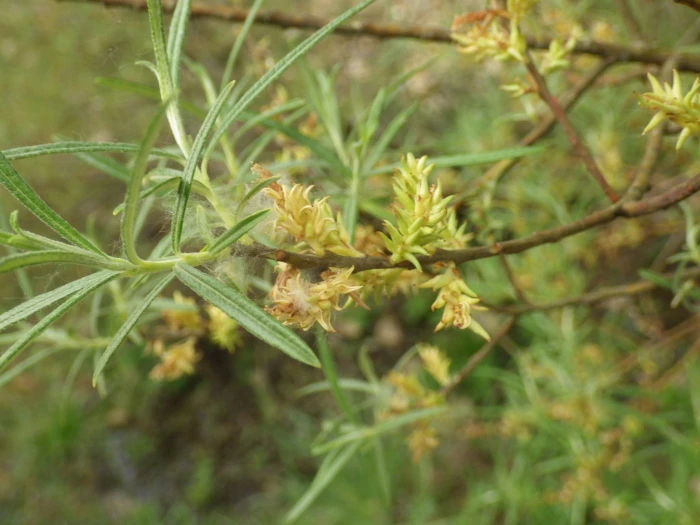Hoary Willow
(Salix eleagnos)
Hoary Willow (Salix eleagnos)
/
/

© Pere Barnola
CC BY-SA 4.0
Image By:
© Pere Barnola
Recorded By:
Copyright:
CC BY-SA 4.0
Copyright Notice:
Photo by: © Pere Barnola | License Type: CC BY-SA 4.0 | License URL: http://creativecommons.org/licenses/by-sa/4.0/ | Uploader: perebarnola | Publisher: iNaturalist |

























Estimated Native Range
Climate Requirements for Fort Worth, Texas
| This Plant | Your Site | Plant Suitability for Your Location | ||
|---|---|---|---|---|
| • Precipitation | 8" - 137" | 33" | Your precipitation may be insufficient for this plant. Irrigate N" / year. | Irrigate N" / year |
| • High Temp. | 44°F - 95°F | 97°F | Your summers may be too hot for this plant. | Too hot |
| • Low Temp. | 3°F - 49°F | 33°F | Your winter temperatures are normal for this plant | Excellent |
This plant should grow well at your location with about N inches per year (Y minutes per month) of irrigation.
Summary
Salix eleagnos, commonly known as Hoary Willow, is a deciduous shrub native to riparian zones, wet meadows, and along streams in Europe. It typically grows up to 10 feet tall and 16 feet wide, presenting an erect and bushy form. The narrow, grey-green leaves can reach up to 8 inches in length and turn yellow in the autumn, providing seasonal interest. The plant is also noted for its catkins, which appear in early spring before the leaves, adding to its ornamental value.
Hoary Willow is valued for its ability to thrive in challenging conditions, including wet and poorly drained soils, making it suitable for erosion control and riparian plantings. It prefers full sun to part shade and can tolerate a range of soil types, though it flourishes in moist, well-drained soils. In cultivation, it is used for naturalistic plantings and as a screen or windbreak due to its dense growth habit. Gardeners should be cautious as Salix eleagnos can spread aggressively by root suckers, potentially becoming invasive outside its native range. Regular pruning may be necessary to maintain its shape and control its spread.CC BY-SA 4.0
Hoary Willow is valued for its ability to thrive in challenging conditions, including wet and poorly drained soils, making it suitable for erosion control and riparian plantings. It prefers full sun to part shade and can tolerate a range of soil types, though it flourishes in moist, well-drained soils. In cultivation, it is used for naturalistic plantings and as a screen or windbreak due to its dense growth habit. Gardeners should be cautious as Salix eleagnos can spread aggressively by root suckers, potentially becoming invasive outside its native range. Regular pruning may be necessary to maintain its shape and control its spread.CC BY-SA 4.0
Plant Description
- Plant Type: Shrubs, Trees
- Height: 4-20 feet
- Width: 5-10 feet
- Growth Rate: Rapid
- Flower Color: N/A
- Flowering Season: Spring
- Leaf Retention: Deciduous
Growth Requirements
- Sun: Full Sun, Part Shade
- Water: High
- Drainage: Medium, Slow
Common Uses
Bank Stabilization, Erosion Control, Water Garden
Natural Habitat
Riparian zones, wet meadows, and along streams in Europe
Other Names
Common Names: Hoary Willow , Rosemary Willow , Bitter Willow , Olive Willow
Scientific Names: Salix eleagnos , Salix cyllenea , Salix elaeagnos , Salix eleagnos f. longebracteata , Salix incana f. longebracteata , Salix incana var. denticulata , Salix lavandulifolia , Salix longibracteata , Salix rorismarinifolia
GBIF Accepted Name: Salix eleagnos